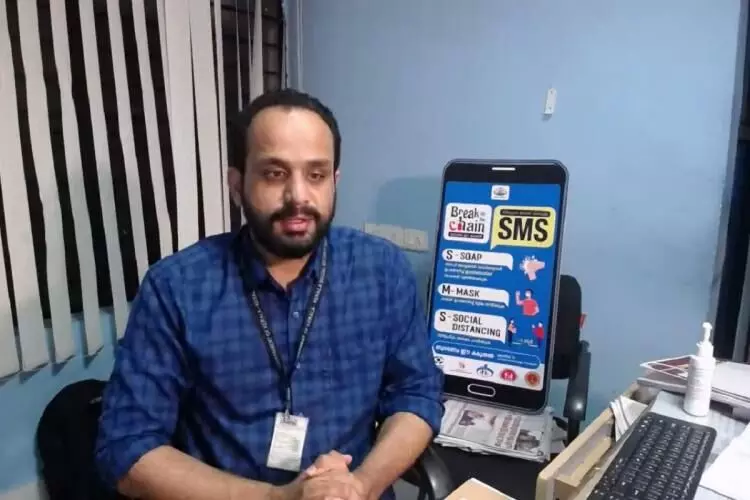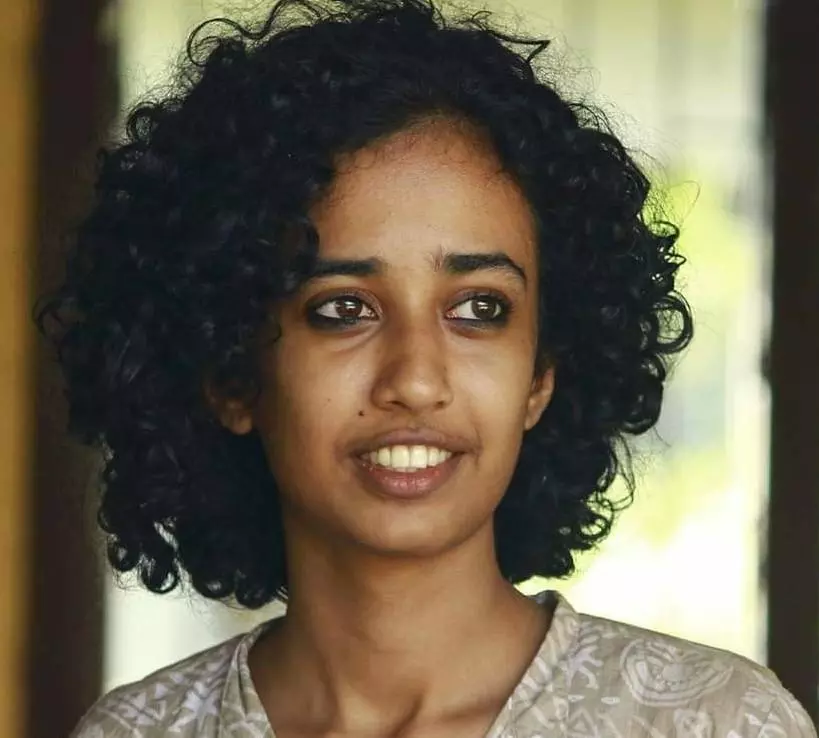

Dr Mohammed Asheel, director of Kerala Social Security Mission
Kerala geared to reduce deaths, thwart COVID spread: Dr Mohammed Asheel
text_fieldsCOVID not just devastated the economy and families but deranged the very social system by which the country witnessed people abandoning their near ones, pleading for oxygen and dead bodies floating in the rivers. But timely attention and the preparedness to address any adverse happenings of the pandemic have helped many states in the country to reduce its impact to a great extent. Kerala is among the ones that formulated insightful strategies to tackle COVID's second emergence.
Kerala constitutes a very diverse community population across the state, and the strategies that need to be formulated should be accommodative to the social structure of each region. And the state, to some extent, has succeeded in evolving inclusive equations and implementing those with greater agility and precision, in cooperation with various government bodies and non-government bodies.
Dr Mohammed Asheel, director of Kerala Social Security Mission, is one of the key officials who steer the various departments to ensure that the formulated strategies are effectively applied during this second wave. In a conversation with our Correspondent Mrudula Bhavani, Dr Asheel shared his insights into the measures the government of Kerala effectively evolved and implemented, on vaccination drive, and future strategies to prevent the spread of the virus and to reduce the fatality rates with Madhyamam English.
Q. What are the strategies the Kerala government has adopted to curb the COVID infection and lower the test positivity and mortality rate?
A. Kerala is the state where the first COVID case in India was reported. When a pandemic breaks out, when there are no medicines or vaccines available, the only way to deal with it is to cut short the pace of virus spread. During the first wave, we delayed the peak of virus infection.
Delaying the spread is our first strategy which is implemented through the 'break the chain' campaign. Trace, quarantine, test, isolate, treat method was used in the first wave. Along with soap, mask, social distancing, the campaign later added 'Avoid three 'Cs'- close contact, closed spaces, crowding. Through this, we strive to limit the pace of virus spread. If we don't follow this keenly, things will reach above our health system threshold.
Reverse quarantine is another method used to separate those who would be affected easily. To ensure social safety to people who face social and economic challenges, the decentralized social systems and health systems were used maximum, including community kitchens, and this process was taken forward by local government, police, teachers and Anganwadi workers.
Benefiting from these, in the first wave we limited the virus spread to 10.6% of people. This is the information we got from the zero prevalence study. This study is done through anti-body tests. In Karnataka by December, 47% of people had Covid anti-bodies. This rate is above three crores. Only below 10 lakhs cases are reported there.
In system response analysis, two factors are looked at. Measure the virus spread through zero prevalence study and measure mortality rate through excess death analysis. Accumulating the numbers of total deaths in 2019 and 2020, we can check what caused the excess or decrease. For example, what decrease in road accident death rate? It is 1482. More than 24,000 deaths decreased in 2020 comparing to 2019 in entire Kerala. When excess death analysis was done in many countries, like in the US it is an increase of 14%.
In some countries like Peru and Ecuador, this rate went above 50%. Only a few countries have lower death rate during the COVID period. New Zealand has -6%. Australia has -3%. Malaysia has -2%. Kerala's death rate in 2020 is -10% lesser than in 2019. Several reasons including wearing masks, alertness on health consciousness, and a decrease in deaths caused by communicable diseases, and the fact that we could support a lot of non-COVID cases etc. made it possible. Before the second wave, we doubled ventilators.
We increased oxygen capacity three times. The number of ICU beds were also increased. We trained 16,000 nurses and around 10,000 doctors to handle the ICU system etc. We keep a balance between the number of cases and our infrastructural facilities, to keep the death rate low. We need a situation where no one dies because of a lack of oxygen and a ventilator. We have to manage the health system capacity threshold and the surge capacity threshold alike to ensure this. The surge capacity we now have is the preparedness that resulted from the first wave.
Q. Unlike the sudden imposition of restrictions at the onset of the COVID last year, the state government was seen imposing curbs gradually to declare a full lockdown across the state this time. What prompted the government to delay implementing the curbs?
A. Our phases of COVID containment include the stage of collective sacrifice and the stage of living with the virus. In the latter, our lives, our work and our health system capacity would be tilting. We've prioritized life and livelihood alike. Livelihoods need to be protected without harming the lives. We clamp on the income generation options of people if the positivity rates are likely to go up to our infrastructural capacities. We restrict the death rate from growing. Not just elections, all sorts of rebound socialization resulted from the pandemic fatigue has intensified the second wave.
Only by delaying the spread can we assure saving more lives and treatment for the maximum number of people. The lockdown was not directly imposed upon people but it was brought in following weekend curfews, night curfews etc. This was intended not to clamp down livelihood suddenly. We have the capacity to treat a maximum of 6 lakhs of patients because there is a limit to the expandability of this system. In order to maintain the surge capacity threshold, we rely on emergency lockdown.
By this, we can reduce the active cases proposition. Patients who are now in ICU and ventilators could be people who were infected before the lockdown, in two-three weeks there will be a decrease in the deaths. The result of lockdown will only be visible a bit later. Even then there are a large number of susceptible people as the vaccination process can't be accomplished because of the lack of vaccines. 1.13 crores of people were our vaccination target by May 20 for those who are above 45 years. This depended solely on vaccine availability. We don't have enough vaccines. If the health department could vaccinate a maximum number of people by May 20, it would've brought in better results.
Q. Despite being in the category of frontline workers, who are prioritised to receive vaccine doses, ambulance workers and bankers were in anguish for not being included in the priority list. Why were they excluded?
A. It was not intended to keep them out but this is the limitation regarding vaccine availability. I find it a positive sign that people are not hesitant towards vaccination. This is not an exhaustive list. We consider aged people, healthcare professionals and persons with co-morbid conditions first because they have an increased risk of infection. Kerala didn't waste a single dose of vaccine, when we got 80 lakh doses of vaccines we vaccinated 85 lakh people. Now we can't schedule vaccines, the vaccine isn't available.
Q. What are the preparations the government has made to thwart the menace of spreading COVID in the monsoon season when a situation of shifting people to relief camps arises?
A. To handle the issue of possible flooding of health systems better, we have learned from our experience. A crisis can arise where COVID positive patients, those in quarantine, and uninfected persons can be in a mixed state. Possible over-crowding in relief camps is another issue. With communicable diseases like dengue fever, floods- and landslides-caused injuries etc. there is a chance of overflow in the health system.
To avoid this, there is a framework prepared, with instructions to identify health institutions in flood-prone areas and to avail an alternate space. The CM has instructed to have a mass triage protocol ready, to prioritize the patient. Chronically ill patients, disabled individuals, senior citizens who are living alone will be carefully listed at a local administration level and be monitored. Quarantine camps would be set up. Those who are not in quarantine or isolation would be separated in different camps. All these guidelines are prescribed in the Orange book by the Disaster Management Authority.
Q. Is there any special attention given to the transgender community, who are mostly unemployed, during the lockdown and are not in a position to be easily vaccinated?
A. The Directorate of Social Justice's transgender cell has ensured them economic assistance. Naturally, all vulnerable groups are facing an additional vulnerability in these times. The social security mission isn't underestimating their conditions.




